Get PeakVisor App
Sign In
Search by GPS coordinates
- Latitude
- ° ' ''
- Longitude
- ° ' ''
- Units of Length

Yes
Cancel
Share ×

Scan the QR code and open PeakVisor on your phone
❤ Wishlist ×
Choose
Delete
National Park Una is in western Bosnia and Herzegovina on the border with Croatia. This National Park is known for its breathtaking waterfalls and rivers and is a common place for rafting. There are 50 mountains in National Park Una; the highest and most prominent peak is Ljutoč (1,168 m/3,830 ft).
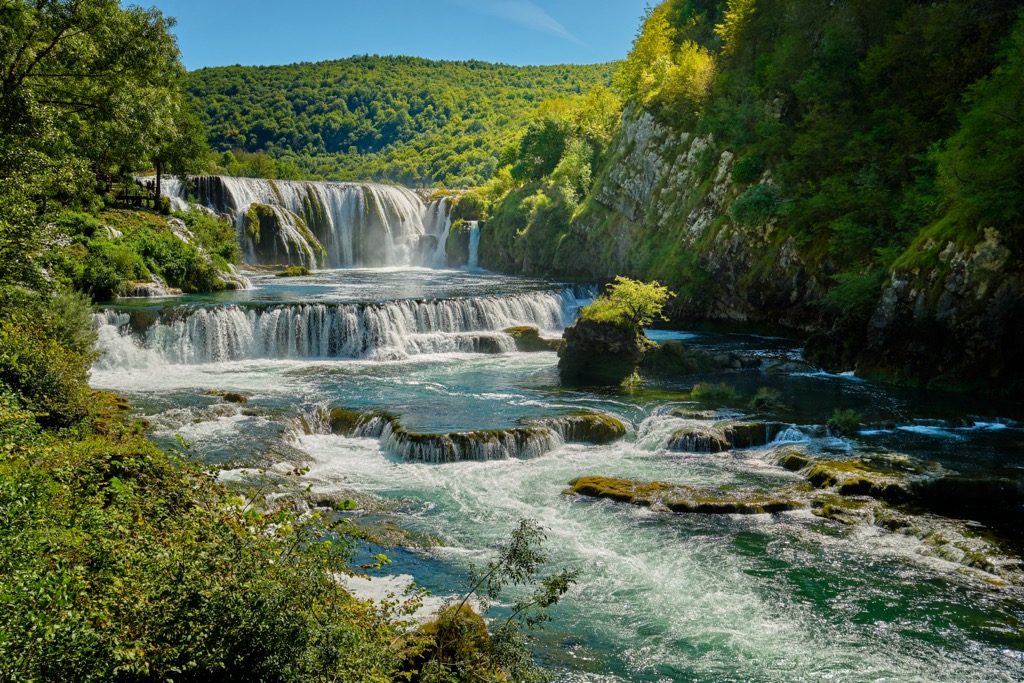
National Park Una is in westernmost Bosnia and Herzegovina, south of the city of Bihać, along with the Croatian border itself. It’s only 40 km (25 mi) from National Park Plitvička Jezera in Croatia.
National Park Una includes the valley of the Rivers Una and Unac and the slopes of the Plješevica, Grmeč, and Osječenica mountains. The park stretches along the valley of the Una River and around the canyon of the Unac, the right tributary of the Una, all the way to the Krka River in the west.
As you may have guessed, the park was named after the River Una. The Una combines valuable natural features and a diverse and preserved natural landscape. It is of exceptional beauty throughout its 212 km (132 mi) length.

The park’s total area is 19.800 ha (48.9 acres). It is in Una-Sana Canton, close to Bihać, Bosanski Petrovac, and Drvar, the largest and most important of which is Bihać.
This park is part of the Dinaric Alps. National Park Una is one of four National Parks of Bosnia and Herzegovina and is very important for the Balkan region. The area of Una National Park represents a unique natural entity in this part of Europe, very valuable for preserving the overall landscape and biological diversity.
Cultural monuments, fortresses, towers, and cities provide value to the entire valley of the River Una. The valley part of this protected area is located at an altitude between 220 (720 ft) and 450 m (1,475 ft) and is oriented in the northwest-southeast direction.
A few of the most popular sites in National Park Una include:
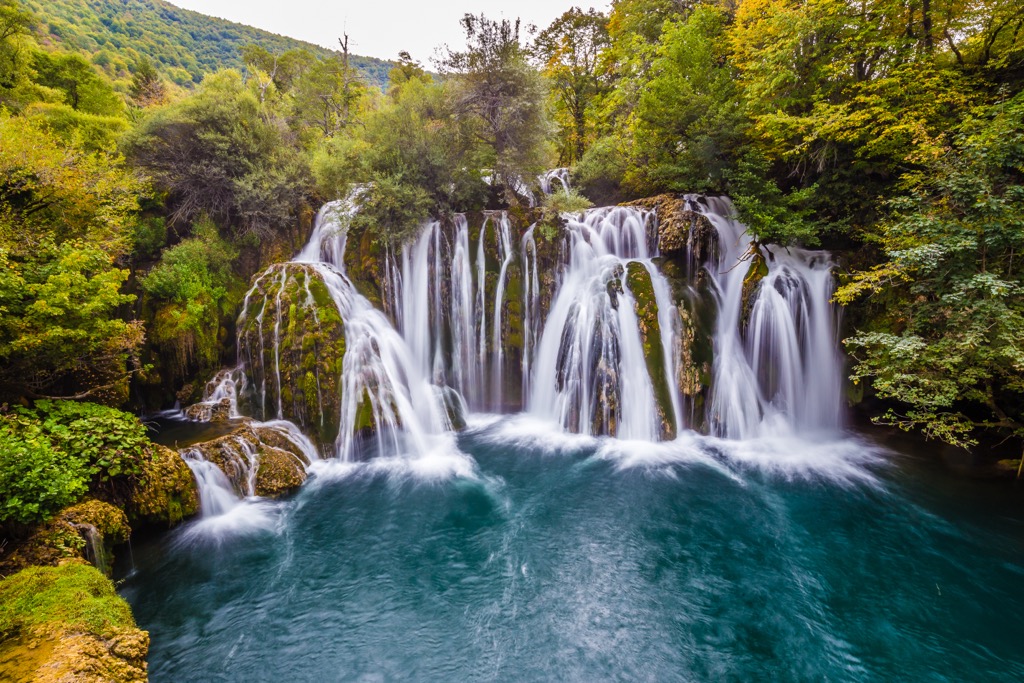
Una is almost entirely a cascading river. Tufa barriers create river islands, rapids, and waterfalls, which add to the river’s majesty. Tufa is a limestone formed when carbonate minerals precipitate out of water in rivers; it’s significant for the area, creating exquisite shapes and adding a breathtaking element to the river.
The tufa deposition process is possible only under strictly defined conditions; the temperature, ph value, biotope, calcium and magnesium content, and calcium carbonate saturation must all be ideal.
During the clean and cold Una River’s turbulence, carbon dioxide is released from the calcium bicarbonate in the water by spilling and evaporating, while calcium carbonate is deposited.
Phytogenic processes accelerate the tufa deposition process. Algae are essential because they consume carbon dioxide, supporting calcium carbonate's excretion.
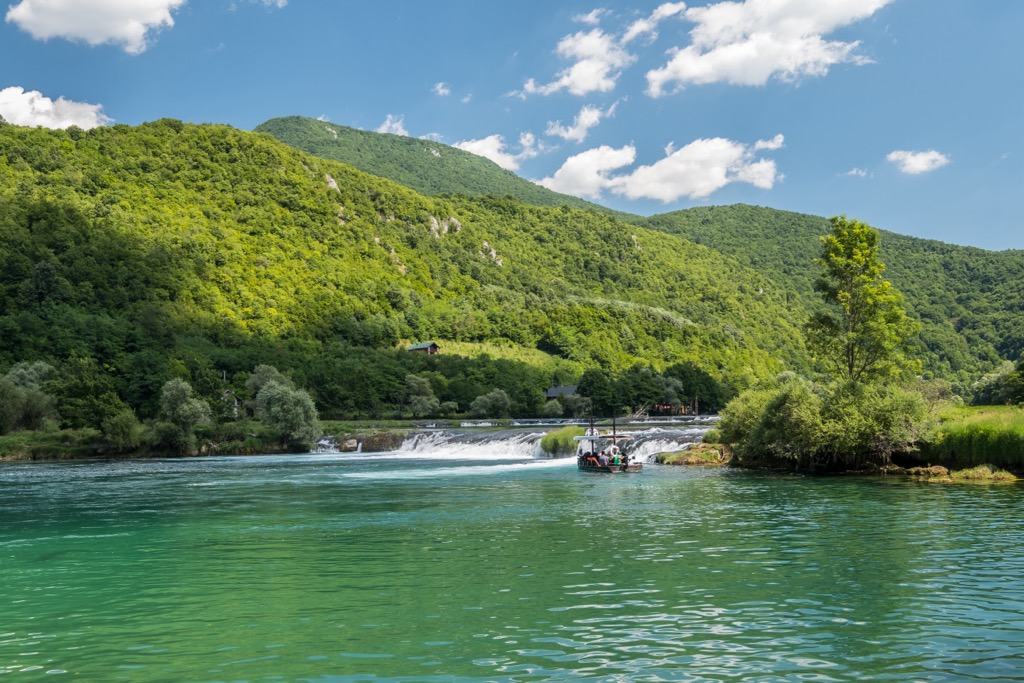
During the paleozoic times, the constant dissolution of limestone created the karst grounds, characteristic of the Dinaric Alps. Rocks here have a carbonate origin. Therefore, there is a lot of limestone and dolomite in their composition.
The highest peaks in the National Park are:
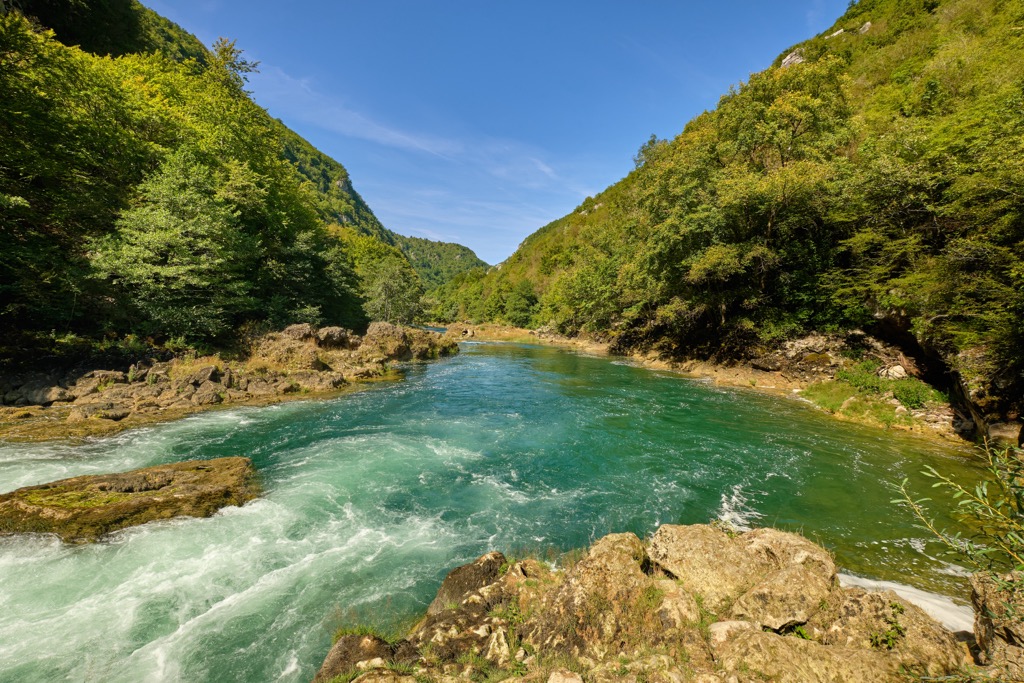
Pastures, meadows, and forests are some of the many terrestrial habitats in the Una National Park area. The most significant part of the park’s surface area is forested. Considerable alder forests thrive along the area near the River Una.
The grasslands of Una National Park represent permanent anthropogenic stages. They cannot survive on their own, so they must be maintained by humans indirectly or directly. Many plants and animals inhabit this area. In the areas above the canyon, there are numerous grasslands.
River Una and River Unac don't have developed water macrophytic vegetation (plants that grow in or near water), and only patches of macrophytic species exist. The rivers feature too high of a flow and too little nutrients to support extensive vegetation.
Wet and swampy grasslands are present in the park. Chasmophytic plants that break through limestone rocks are essential for the park’s karst formations.
Tufa waterfalls represent their own ecological biotope, significantly different from all the other habitats in freshwater. A total of 25 species of algae, 42 plants, and 17 mosses have been recorded. Most of these species participate in the creation of tufa formations.
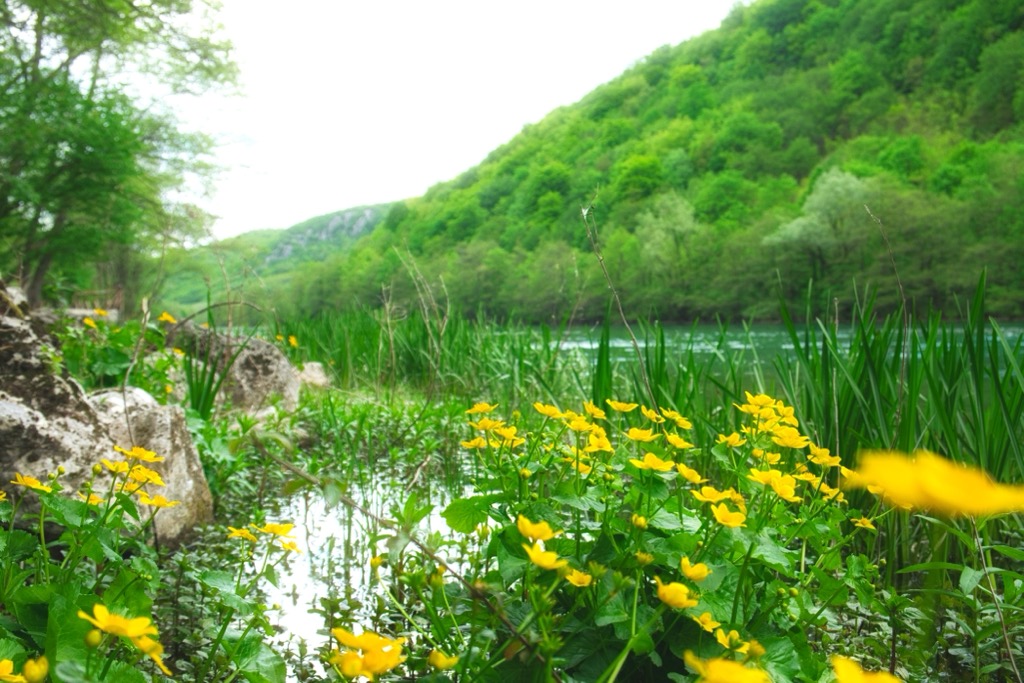
The fauna of National Park Una is very diverse. More than 120 bird species have been recorded. National Park Una is attractive due to the presence of certain rare and endangered species and a large number of songbirds.
Fish are significant and environmental groups closely monitor their populations. Among the 15 species of fish in the Una River in the area of the National Park and its tributaries, the most significant are Grayling (Thymalsus thymallus) and Brown trout (Salmo trutta).
There are at least 60 species of mammals, of which 33 are protected. Among the mammals of Una, there are two endemic species: the alpine vole (Microtus multiplex) and the woolly vole (Dinaromys Bogdanov). Notably, 16 species of bats (Chiroptera) make their home in the park, utilizing the extensive karst caves amidst the limestone canyons.
Amphibian species are also abundant, the most important of which are the Great Kingfisher and the Great Green Frog. Many types of salamanders live amidst the park’s wetter zones. Reptiles of the park are primarily common continental ones. There are 12 species of reptiles from two orders: crustaceans (Squamata) and turtles (Chelonia).
Currently, 75 species of butterflies suggest that the ecosystem of National Park Una remains balanced and healthy.
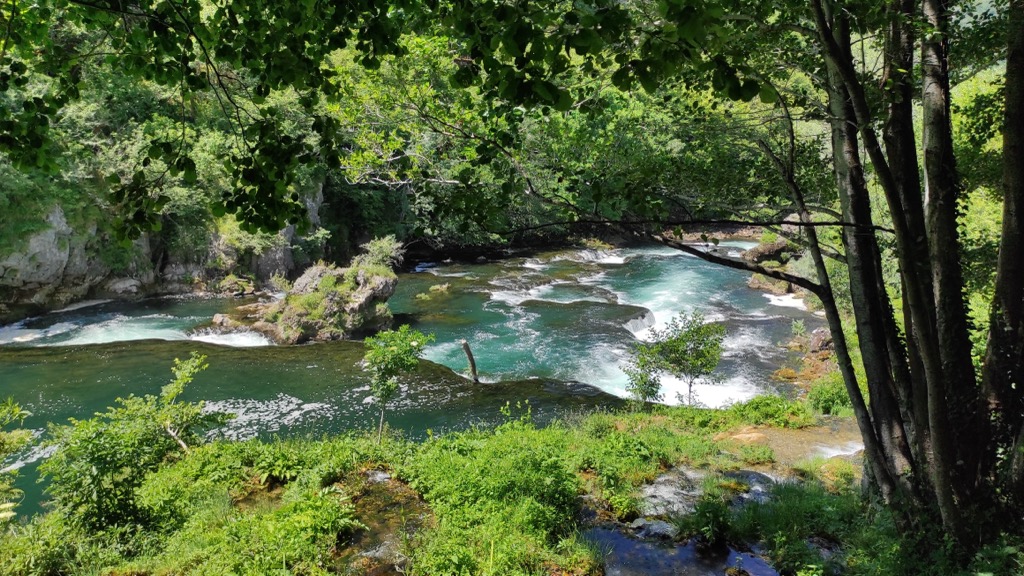
Humans have inhabited the area of National Park Una from prehistoric times until the present day, likely for 40,000 years or more. Numerous archaeological sites offer evidence of the earliest residents, while the remains of multiple forts, hillforts, and medieval castles provide a glimpse of our more recent ancestors.
Legend states that the name River ‘Una’ originates from the Romans. As the Roman empire spread, a soldier saw the valley of River Una for the first time. He was fascinated by its beauty and shouted: "Una," which means “the only one.” People adopted the name because it represented the river’s uniqueness and elegance.
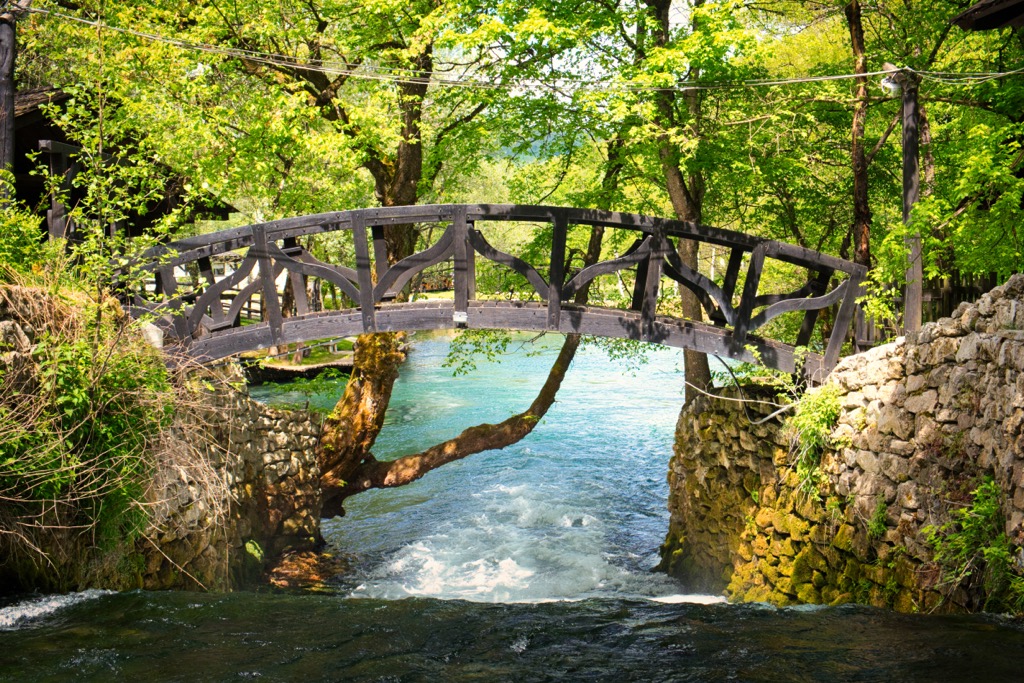
The first modern inhabitants of this area were Illiryan Iapodes, who also settled throughout Croatia and Slovenia. The favorable living conditions included an excellent climate, fertile land, and nearby water.
The development of Iapydes culture took place approximately during the last few centuries AD. They were engaged in agriculture, cattle breeding, hunting, and fishing in River Una. Lapodes positioned their homes on naturally protected elevated locations. It was common for Iapodes to build stilt houses called sojenice, which they placed on calm parts of River Una.
The Iapodes are famous for their material culture. They are known for their rich jewelry decoration, weapons, and general metallurgy. Objects made from clay and stone are characteristic of the Una Valley.
The Iapodes were a highly organized society. Their infrastructure indicates that they knew different building techniques. Their protection of settlements and communication between groups also suggests an advanced civilization. Moreover, Iapodes' burial process was fundamental - they would be enclosed in ceramic urns and burned.
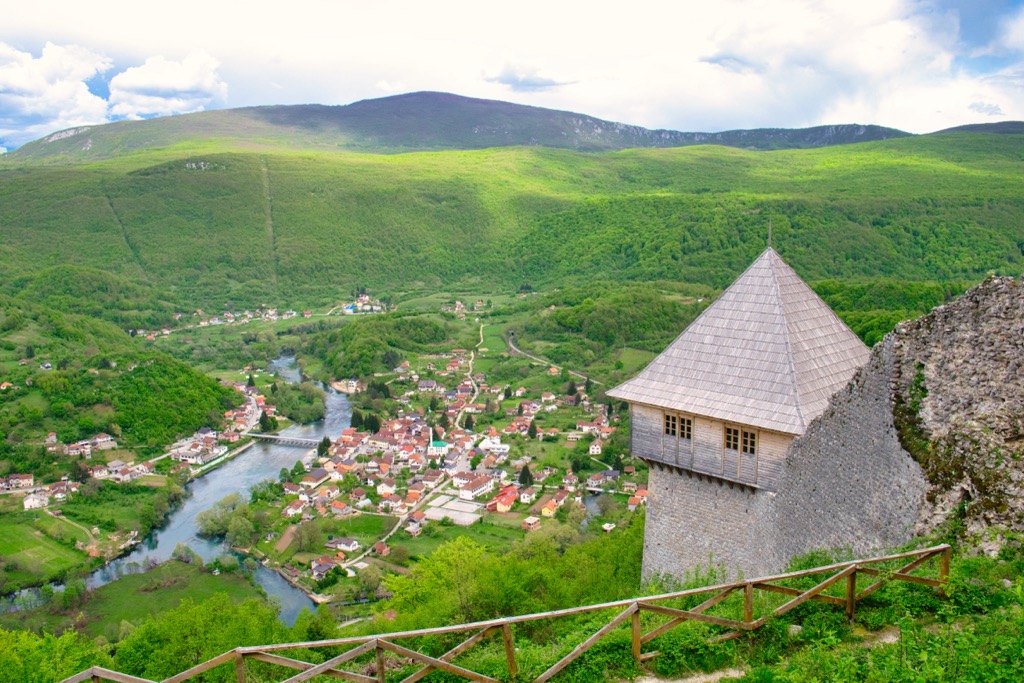
When Romans first attacked Illyricum, the Iapodes were among the first who opposed them. However, Rome was much stronger and eventually occupied Illyrian territory. The territory was called Illyricum and later became the Roman province of Dalmatia.
After the fall of Rome, the park area found itself between the Croatian and Bosnian medieval kingdoms. The park was significant as the host of numerous battles between Croatian, Bosnian, and Hungarian medieval kingdoms. The inhabitants built many fortresses during this time, which represented a safe way of life because they were surrounded by thick walls, safe from potential enemies. Some of the forts you can visit in National Park Una are:
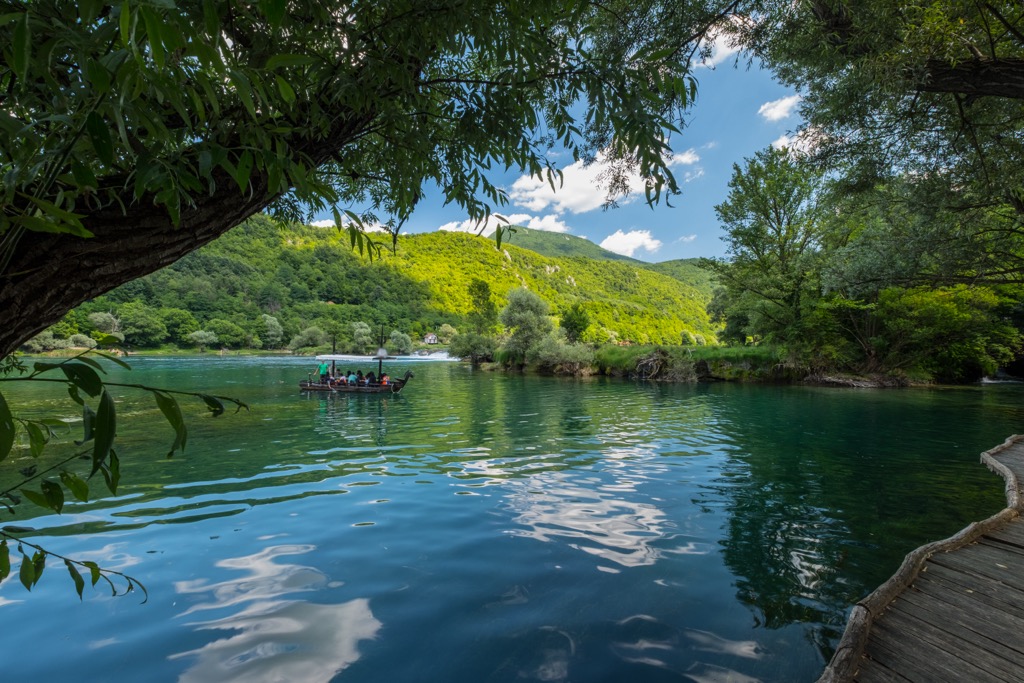
Eventually, the park and the whole of Bosnia and Herzegovina were occupied by Ottoman Empire.
It is worth mentioning the historical watermills placed all over River Una. Until the beginning of the twentieth century, dozens of mills existed along the Una River. Today, only a few are in operation. These watermills are known as "Mlin Potočak."
In ancient times, some mills also had "Bučnice." Bučnice represents a simple system for fabric washing. These old washing machines worked only with water power - they would make great eco-washing machines! Some of the last "Bućnice" are displayed in Martin Brod.
Locals noticed the importance and significance of the Una River and launched an initiative to name this area a National Park. The government declared the Una National Park on May 29, 2008. The law defined the borders and regulated issues of protection, management, improvement, and use of Una National Park.
Ultimately, the push to declare the park was successful because of the region’s biological and landscape diversity. Biologically, the park represents a diversity of plant and animal species and the presence of rare and endemic species. Terrain-wise, it features unique karst and hydrographic forms such as Tufa barriers.
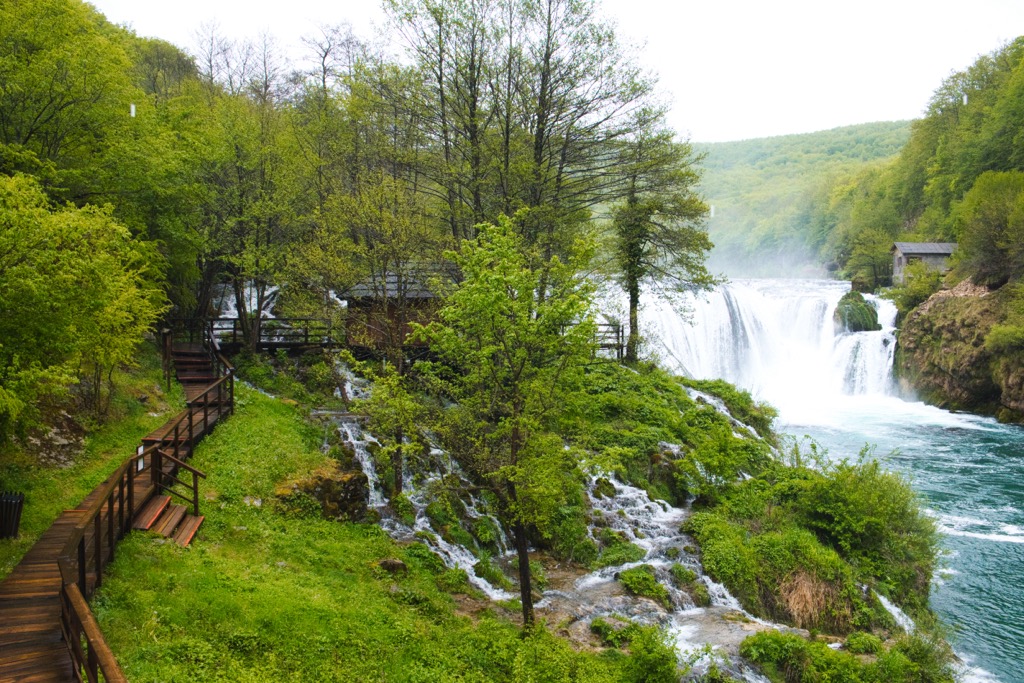
You should try at least one hiking trail to get the best experience in National Park Una. A few routes varying in difficulty and length best represent the park. Some of these routes are bike friendly, too.
This is an educational trail for hobby and beginner hikers, great for spending time with your family and learning about National Park Una. It is bike friendly. The path is bike friendly and is 5 km (3.1 mi) long.
Educational kiosks give more insight into Una National Park's history, geography, and ecology. The trail explains that this area has been populated since prehistory, with buildings and ruins from different cultures. Locals often used this trail because it led them to water mills placed on River Una's banks.
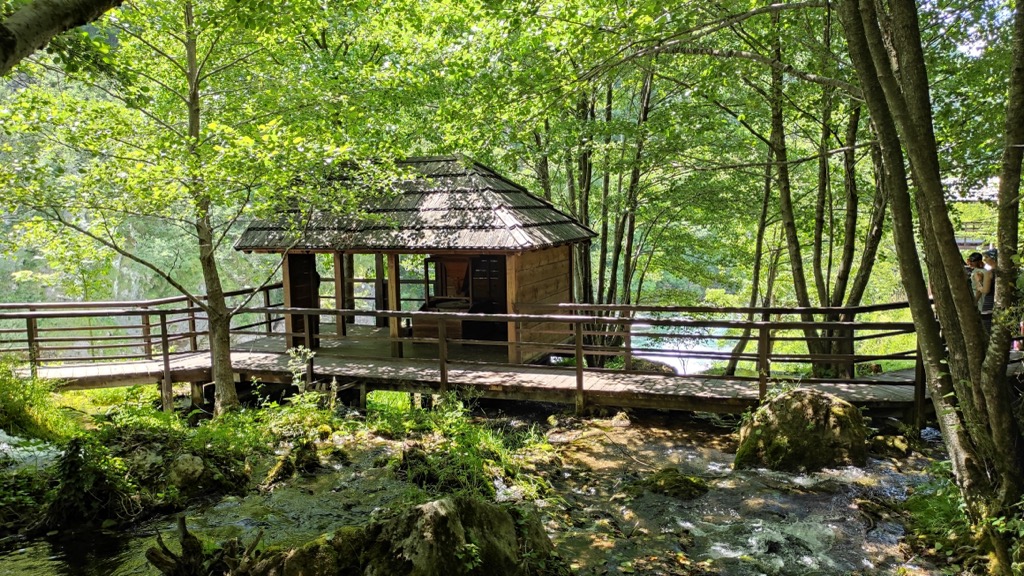
This trail is much longer than the previous one, at 30 km (18.5 mi). The trail begins in a nearby town, Ripač. From the start, you are greeted by the beautiful River Una. After that, you head to the 1st entrance of Una National Park. From there, follow the beautiful trail through the forest to Štrbački Buk. You can take a little break and head up the previously mentioned "Along the Paths of the Past" route. The trail is relatively easy, but keep in mind that it’s long.
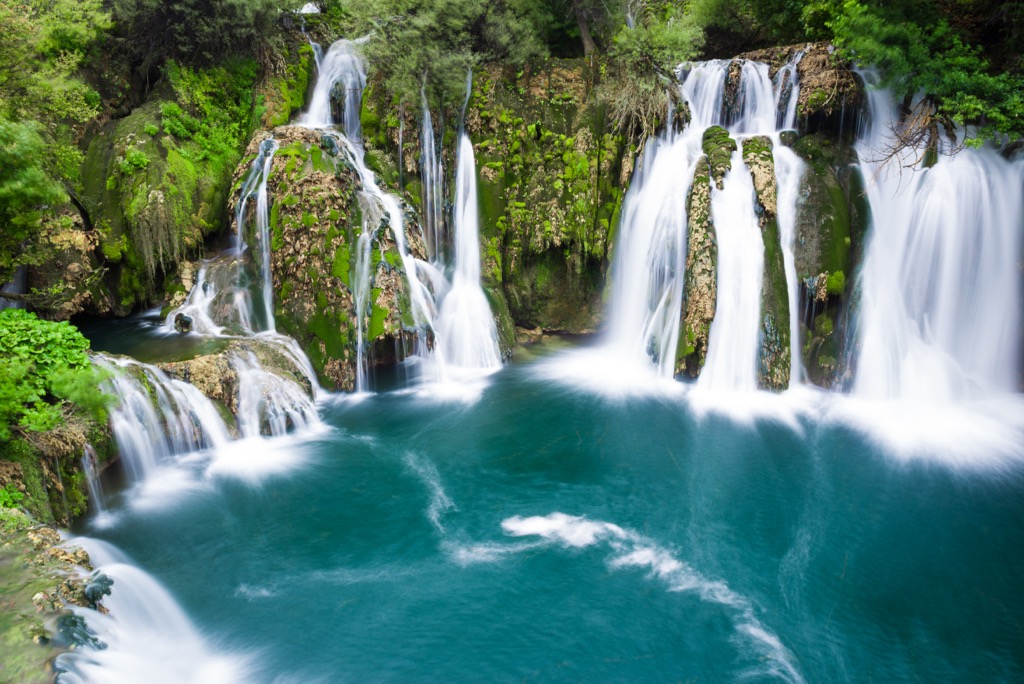
This trail is designed for running, but it can also serve hikers. The course starts at the Resort Gorjevac and leads through a beautiful forest to Štrbački Buk. It is 15 km (9 mi) long and has stunning views.
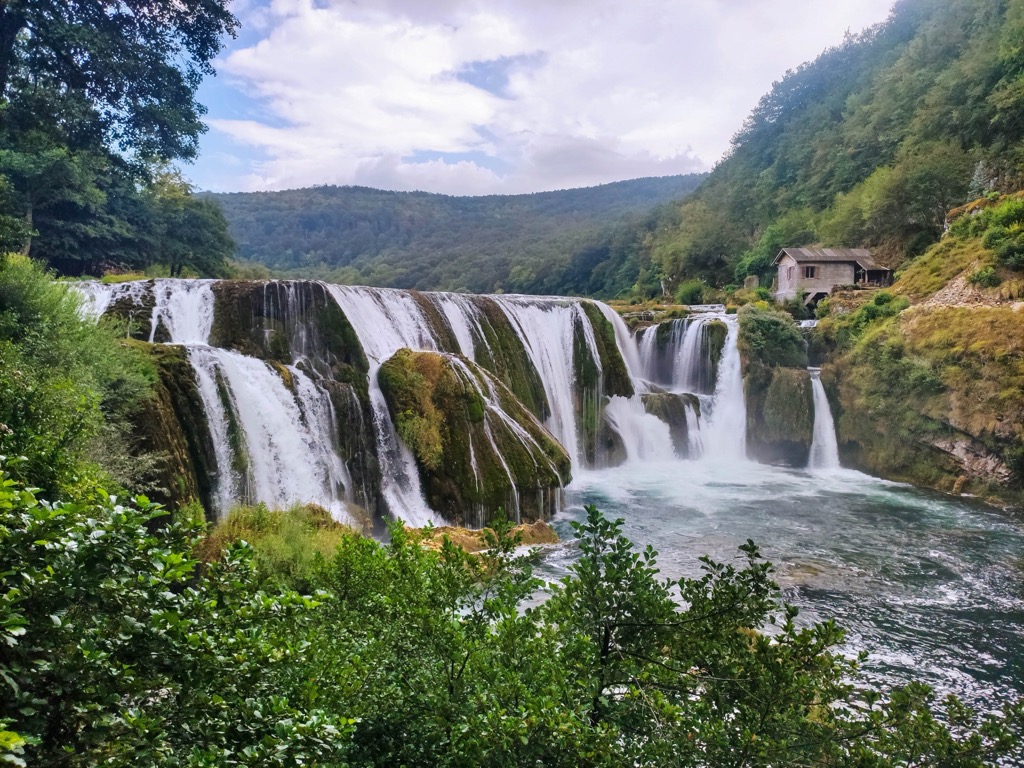
Bihać, Bosanski Brod, and Drvar surround National Park Una. The park is 22 km (13,5 mi) away from Bihać, 149 km (92,5 mi) away from Banja Luka, and 53 km (33 mi) away from Bosanska Krupa. Here is a little insight into these towns and what you should know:
Bihać is the closest city to Natural Park Una, with a population of 56,000. Bihać is the administrative center of Una-Sana Canton and is a developed city with plenty to offer.
Bihać has always been a crossroads of culture. There’s a touch of East and West, old and new, visible at every step. The natural beauty and delicious food of this city are beyond dispute.
If you want to visit cultural and historical sights, you should start with Kapetanova kula, Crkva Sv. Ante Padovanskog, and Bihaćki Sarkofag. Since this city is of significant size, you can book many apartments and hotels.
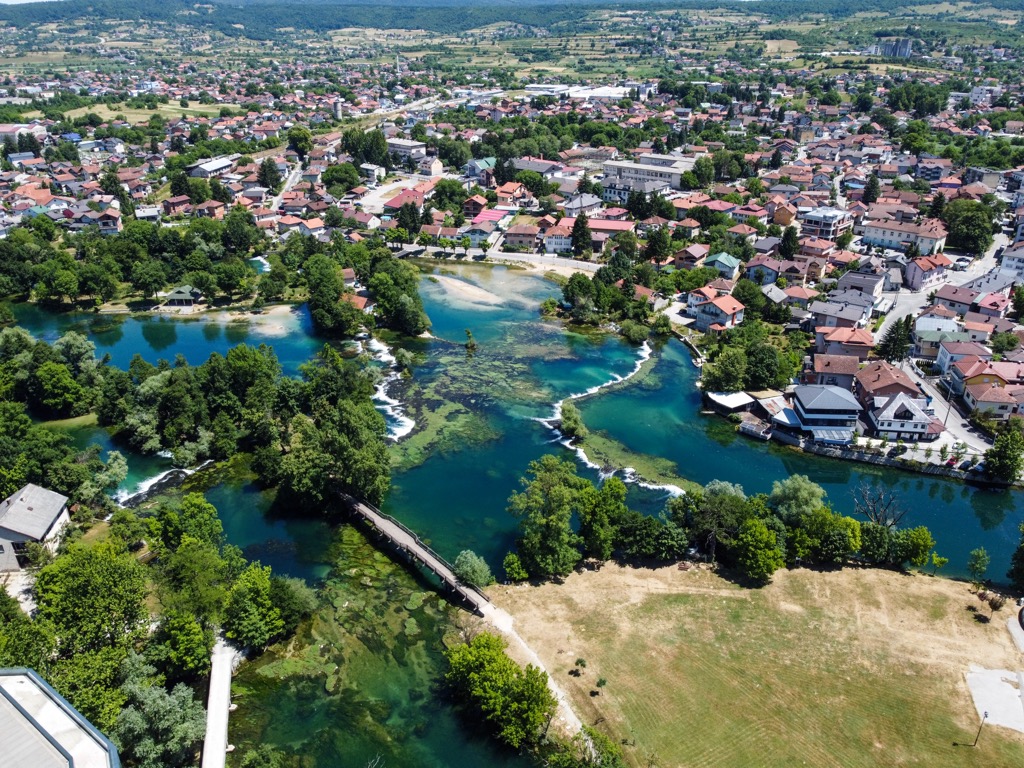
Banja Luka is the second-largest administrative city in Bosnia and Herzegovina, with a population of 185,000. Banja Luka is the center of Bosnian Krajina and the administrative center of the Republic of Serbia. The city lies upon River Vrbas.
Banja Luka is a modern European city and a recognizable center in the region with rich cultural and sports facilities. You can visit attractions in Banja Luka, including Kastel, Ferhat Pasha Mosque, and the Cathedral of St. Bonaventure.
Getting to Banja Luka by bus, train, or car is relatively easy. Hotels and apartments vary in price, so you can find something that suits you.
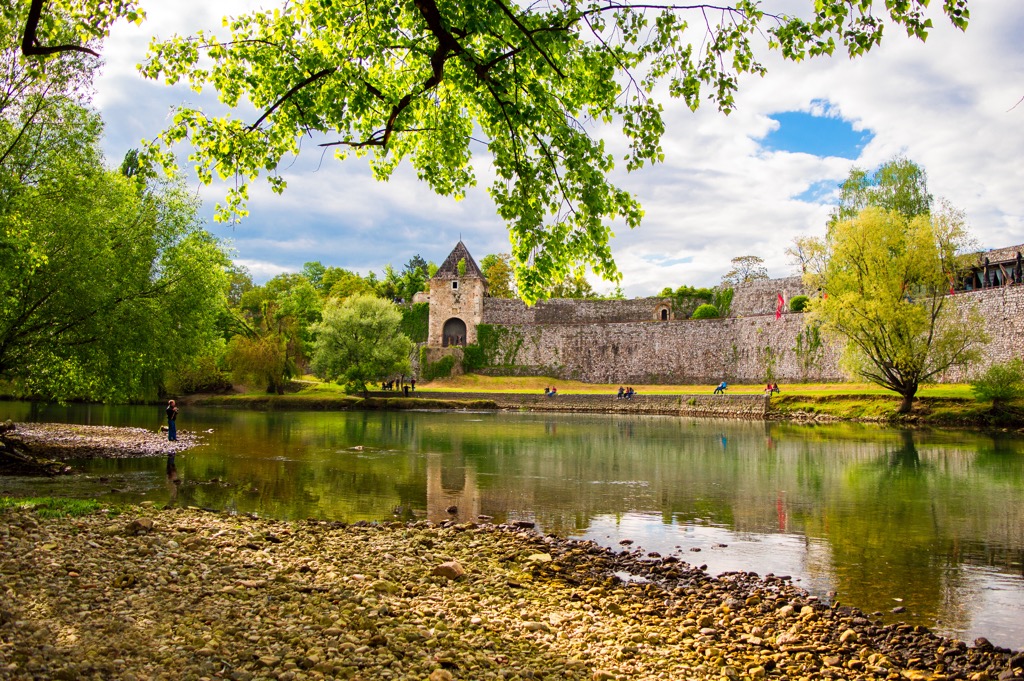
Bosanska Krupa is a city in the northwestern part of Bosnia and Herzegovina, located in the valleys of the Una and Krušnica Rivers. The population of this city is around 29,000. After the war, Bosanska Krupa was among the most destroyed communities in Bosnia and Herzegovina, after which this town regained its former glory.
The most prominent tourist attractions in this area are natural resources. You can find beautiful spots for fishing, walking, hunting, or enjoying the natural surroundings. The jewel of this area is the crystal clear River Una. Tourists can visit the Old Town and the Pset Fortress, which is in the very center of the city, on the banks of the Una River.

Explore Una National Park with the PeakVisor 3D Map and identify its summits.








